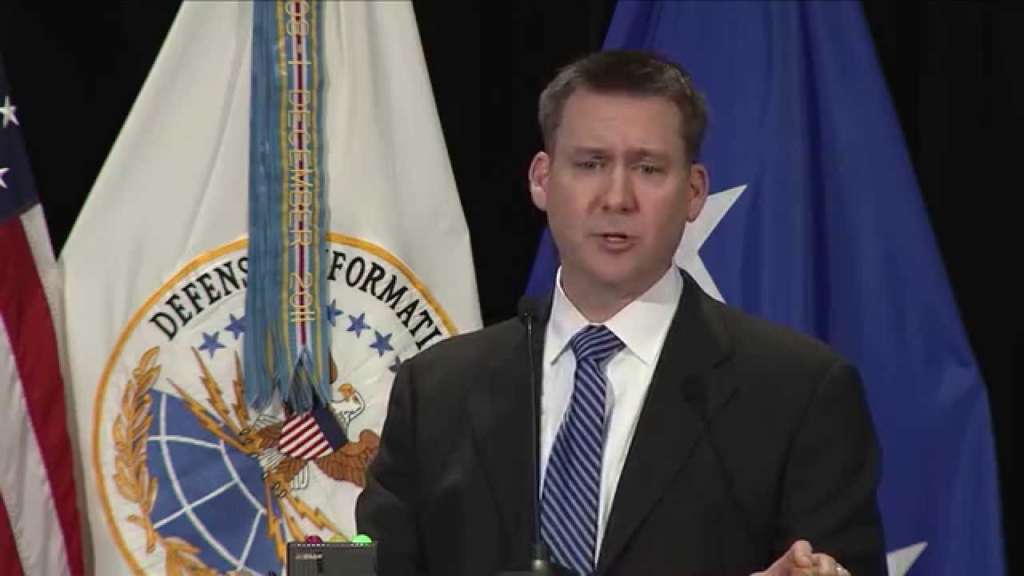
DISA takes center stage in DoD’s move to the cloud
DISA is leading many of the reform and efficiency initiatives mandated by former Defense Secretary James Mattis particularly around technology modernization and...
The Defense Information Systems Agency wants to be right in the middle of all of the Defense Department’s cloud activities.
Whether it’s through the MilCloud 2.0 offering or the effort to bring the DoD’s Fourth Estate — the Office of the Secretary of Defense and all the defense agencies and offices — under one technology umbrella, or whether it’s the expansion of enterprise services, DISA executives say the agency is leading many of the reform and efficiency initiatives mandated by former Defense Secretary James Mattis.

“A lot of those initiatives are coming to DISA to execute. DISA is going to be the center stage for all the cloud activities taking place across the department. One of the other new things that came out recently is the demand to consolidate across the Fourth Estate all of those independently-owned and operated networks into one network and DISA has the responsibility to do that consolidation and convergence into that one network solution,” said Dave Bennett, DISA’s director of the Operations Directorate and chief information officer, at a recent panel sponsored by the AFCEA Washington, D.C. chapter. “So as you look across a variety of things, use cases, if you will, to drive the department in a new direction, the agency is central to many of those activities either in helping to design the solution or actually doing the execution.”
The MilCloud 2.0 is one of the key pieces to the Fourth Estate transition.
Jason Martin, director of DISA’s Services Directorate Executive, said the cloud hosting platform is a major part of conversations with all the military services, Defense agencies in the Fourth Estate and even the intelligence community.
“We’ve worked internally [with] the agency to identify all the applications capable of running in a virtualized environment. We, in fact, have over 30 today that are in the process of being built and/or are completely built running through the implementation process right now.”
Martin said with the move of the Fourth Estate, more applications will migrate over the next year or so.
And it’s the readiness of those applications to move to the cloud — private, public or otherwise — that Martin and other DISA executives want to make sure their partner agencies fully understand.
Terry Carpenter, the director of the National Background Investigative System Directorate at DISA, said this issue is one that the contractor community needs to take a more active role in.
“From an app owner perspective, those of you who are working with government partners and providing services to help them manage applications, please, show them, teach them, point out the lessons and things you’ve learned about how hard it is to get your applications ready for the cloud. Some will be easy. But there are those where you really do need to look at the application architecture. You need to look at the way in which you are managing the code and your cloud infrastructure. But that’s not the hard part. The hard part is putting all those pieces together and understanding the amount of work and time it takes to get ready for cloud to really use it.”
Martin added DISA doesn’t have developers to build apps or platforms so industry must fill that need across DoD.
Reshape apps and add automation
At the same time, Roger Greenwell, DISA’s risk management executive and authorizing official, said opportunities like the one the Fourth Estate has in front of them should be used to reshape applications by adding automation to improve security and functionality.
Lytwaive Hutchinson, the deputy director of the Joint Service Provider at DISA, said there are dozens of examples where customer agencies think they can just “lift-and-shift” an app to the cloud and in the end have to spend money to make the move happen.
Martin said DISA is working with the DoD CIO about what is the “art of the possible” when it comes to applications.
Related Stories

DoD orders applications in more than 100 data centers to move to DISA’s milCloud

DoD needs to move carefully as it thunders toward cloud migration, DISA officials say
Martin said he expects that as the services and the Defense agencies begin to rationalize their applications, the use of dev/sec/ops will grow quickly.
Martin said in the end the goal is to reduce those major cost drivers, operations, sustainment and people.
“We have a lot of legacy applications. DFAS was with us [Wednesday]. We were talking about an application that was built 50 years ago. We will not automate that anytime soon. But that is indicative of what we have in the data centers over time,” he said. “We, like everyone else, want to evolve so we have to look at this in a couple of different ways. We have to build for the cloud, not just forklift apps to the cloud. You will not save a lot of money. Build for commodity, build higher up the stack and leverage software-as-a-service. So think before you build and consolidate before you hand off.”
Copyright © 2025 Federal News Network. All rights reserved. This website is not intended for users located within the European Economic Area.
Jason Miller is executive editor of Federal News Network and directs news coverage on the people, policy and programs of the federal government.
Follow @jmillerWFED



